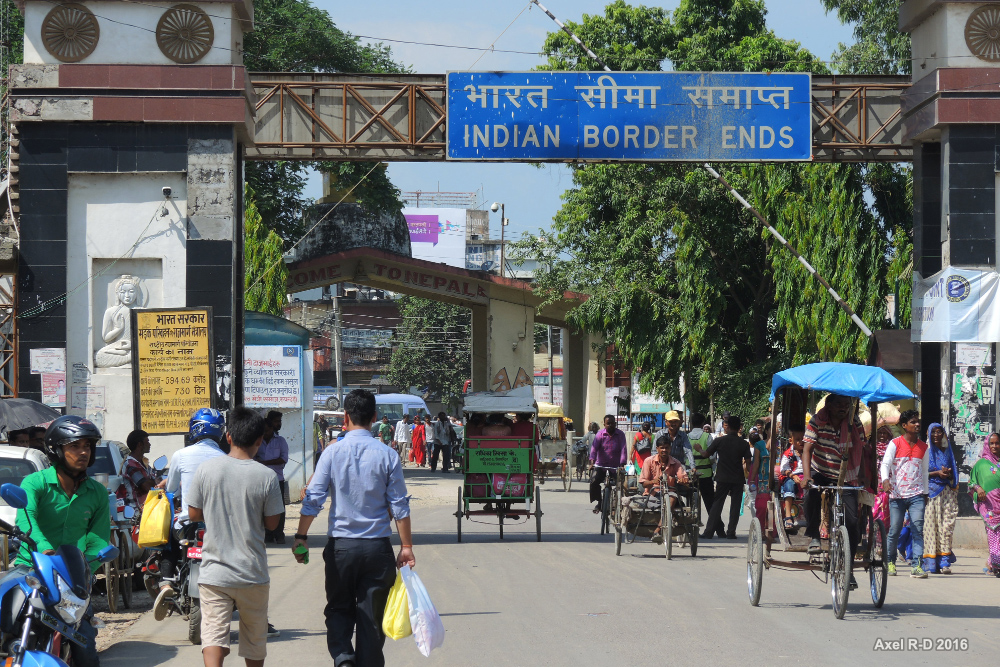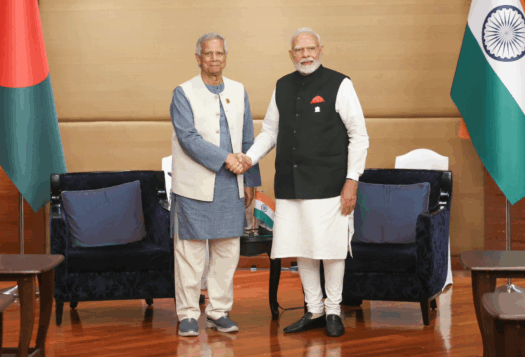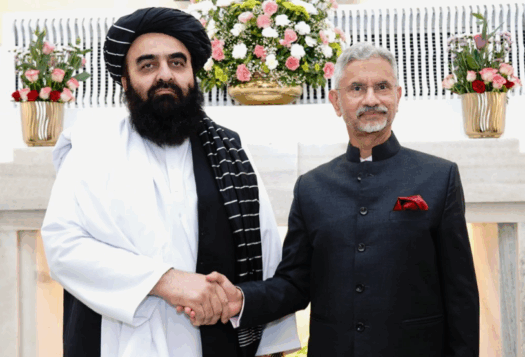
In late August this year, India and China agreed to resume cross-border trade through the Himalayan Lipulekh Pass—one of three historic trade routes linking India’s Uttaranchal to Tibet—without consulting Nepal. The decision to reopen the trade route emerged from the 24th Special Representatives’ dialogue between Indian and Chinese officials. Kathmandu sent diplomatic notes to both New Delhi and Beijing, reaffirming its claim over Lipulekh (and the adjoining Limpiyadhura-Kalapani sector). India’s foreign ministry responded that border trade “commenced in 1954 and has been going on for decades,” framing Lipulekh trade as a longstanding practice. This episode demonstrates how Nepal’s territorial concerns at the trijunction are often sidelined by India-China bilateralism. Nepali officials have asserted that making decisions “unilaterally” without consulting Kathmandu amounts to an assault on Nepal’s sovereignty. However, the incident should drive home a broader lesson for Nepal—the downsides of its strategy to pursue a “multi-vector” foreign policy and maintain good relations with both India and China. Balancing between the two has weakened Nepal’s leverage to secure prior consultation with India at the trijunction and obtain favorable terms for the development of a northbound rail link to China.
Nepali officials have asserted that making decisions “unilaterally” without consulting Kathmandu amounts to an assault on Nepal’s sovereignty. However, the incident should drive home a broader lesson for Nepal—the downsides of its strategy to pursue a “multi-vector” foreign policy and maintain good relations with both India and China.
Historical and Legal Roots of the Dispute
The modern dispute over Lipulekh and Kalapani has deep historical roots. Its origin lies in the 1816 Treaty of Sugauli, signed between the Kingdom of Nepal and British India. Article-V of the Sugauli Treaty records Nepal’s renunciation of claims to the lands west of the Kali river, but, crucially, the treaty does not specify the location of the river’s source. Kathmandu’s position is that the Kali’s true headwaters lie near Limpiyadhura, such that both Lipulekh and Kalapani fall on the Nepalese side. India, however, identifies a different stream (starting near Kalapani itself) as the Kali’s source, an interpretation that places these high-altitude passes under Indian administration.
Throughout the 19th century, Survey of India series depicted the Kali’s headwaters variably: some early editions placed the origin near Limpiyadhura, while later editions leaned toward a watershed-based boundary, seeding today’s cartographic ambiguity. In the 20th century, border protocols after the 1962 Sino-Indian war entrenched India’s practical control of the disputed area. Despite Nepali objections, India stationed troops at Lipulekh-Kalapani after 1962—by the late 20th century, it had formalized the Lipulekh Pass as an India-China trading point.
The cartographic tug-of-war has continued into the 21st century. In November 2019, India published a new official map that showed Kalapani and Lipulekh within India. Nepal immediately protested, reiterating their territorial claims and calling India’s move “unilateral and illegal.” By June 2020, Kathmandu formalized its claim by amending the Nepali constitution to include Lipulekh, Kalapani, and Limpiyadhura on its official map. Successive Nepali governments have lodged formal protests—in 2015, 2019, 2020 and again in 2025—each time criticizing the India-China moves as infringements on Nepali sovereignty. The May 2020 inauguration of the Indian road to Lipulekh further inflamed the dispute and accelerated Kathmandu’s constitutional map move.
Economic Consequences
Beyond the political and territorial consequences, the India-China decision to reopen the three passes concretely threatens Nepal’s connectivity objectives and economic aspirations. In practice, the resumption of trade via Lipulekh could undermine the economic potential of a long-envisioned trans-Himalayan railway linking Gyirong to Kathmandu. As Nepal negotiates with China on northbound Belt and Road Initiative (BRI) corridors, the existence of alternative routes weakens Kathmandu’s hand as the parties jostle over the loan versus grant mix, interest caps, procurement terms, and more. If traffic and goods go through Lipulekh instead of routes managed by Nepal, such as the Humla and Karnali corridor, the Nepali economy would lose out on the benefits, that come from being on a main trade route, such as lower transit fees, fewer local jobs from cross-border services, and less visibility for Nepali traders. In the long run, these missed opportunities could pile up, eroding both valuable opportunities for economic mediation and the perceived viability of alternative northward links in the eyes of lenders and investors.
Moving forward, the resumption of India-China trade at Lipulekh narrows the space for Nepali leaders to maneuver as they face a difficult combination of domestic political pressure and shrinking diplomatic bargaining power. At home, cross-party denunciations and parliamentary scrutiny make public compromise politically costly, while the steady normalization of India-China arrangements at the trijunction weakens Kathmandu’s standing in future talks, both with India over territorial concerns and with China over the establishment of Nepal-centric northbound corridors. The move does more than redraw lines on paper: it reshapes everyday economic realities and constrains future policy options for Nepali officials.

Nepal’s Multi-Vector Diplomacy
The Lipulekh episode sits within Kathmandu’s broader multi-vector foreign policy, avoiding overdependence on any single power while advancing development and security goals. Practically, Nepal has long tried to play India, China, and—to a lesser extent—the United States against each other, using diverse partnerships to meet domestic needs. That means courting Chinese investment (e.g., via the BRI) even as it maintains close cultural and economic ties with India. The strategy includes multilateral engagement: in 2025, Nepal was a “dialogue partner” at the Shanghai Cooperation Organization (SCO) summit and continues to advocate “revitalized multilateralism.” Kathmandu has also stated it will not align militarily with any power: “We never join any military alliance and never accept to be a part of the security pact of any country,” former Foreign Minister Saud declared in 2024. This is an approach rooted in domestic resistance to alignment and Nepal’s overall development priorities based on voter expectations, a stance that is very unlikely to change even with a new regime after the general election next year. The same calculus explains why Kathmandu accepted a USD $500 million U.S. grant despite Chinese complaints, yet rejected a U.S. humanitarian assistance and disaster relief partnership seen as military‑adjacent; highlighting Nepal’s nonalignment and diversification approach as enshrined in its constitutional and policy framework.
Over the past three years, Kathmandu has pressed for closer economic ties with India as flagship Chinese BRI schemes like the Kathmandu‑Lhasa railway and several hydropower plants have stalled amid financial and political headwinds. India, for its part, has boosted investment and aid significantly, while also introducing guidelines to prevent the purchase of Nepali electricity generated by projects with Chinese involvement, shaping Nepal’s export options. In 2022, Nepal awarded two major hydropower projects to an Indian public utility and concluded a power‑purchase deal for up to 10,000 MW over the next decade. On connectivity and payments, the two sides launched cross‑border passenger rail and rolled out Indian RuPay cards in Nepal. In short, Kathmandu is engaging both neighbors—inviting Chinese investment and deepening ties with India—while keeping options open with the United States. But balancing these diverse ties while safeguarding sovereignty is delicate work.
Nepali policymakers need to think seriously about whether the country’s multi-vector foreign policy is indeed working: though this approach has preserved national autonomy and served development objectives in the past, it has also undermined Nepal’s ability to secure the external commitments necessary to protect sovereign territorial claims.
Frozen Out at Lipulekh
This multi-vector foreign policy has allowed Nepal to court diverse development partners, but the lack of alignment with either China or India has limited Kathmandu’s ability to advocate for its position on the Lipulekh question. Both neighbors have tended to act bilaterally when convenient, sidelining Nepali interests. When former Nepali Prime Minister KP Oli recently met with Chinese President Xi Jinping on the sidelines of the SCO summit, he registered his objection to the resumption of India-China trade via Lipulekh, but official Chinese statements afterwards did not record the dispute. In fact, they reported discussions that Nepal later denied: Beijing’s readout suggested Kathmandu endorsed the Global Security Initiative, which Nepali officials publicly rejected when lawmakers sought clarity after Oli’s return.
China framed its silence as “non-interference,” treating Lipulekh as a bilateral matter between India and Nepal and urging Kathmandu to resolve it directly with New Delhi. In practice, this stance aligns with Indian interests—enabling India to consolidate trade links with Tibet—while helping China regain goodwill after the Galwan clash. As a result, New Delhi and Beijing reap mutual benefits from the Lipulekh route, including improved pilgrimage and trade access—while Kathmandu’s territorial claims are largely cast aside as a secondary concern. On the whole, Beijing’s strict non-alignment on Lipulekh enables New Delhi to extend its Himalayan reach, and India’s confidence in Chinese silence, encourages it to proceed more or less unilaterally.
The ongoing Lipulekh dispute demonstrates how bilateralism among regional powers often structurally sidelines small states like Nepal. Without deeper alignment with either neighbor or firmer multilateral backstops, India-China bilateralism at Lipulekh is likely to continue outpacing Nepal’s legal claims. While Nepali observers may perceive these developments as unfair, Kathmandu should confront this geopolitical conundrum directly to reassert its sovereignty. Nepal has sought advance consultation as well as the reactivation of India-Nepal boundary mechanisms before any operational change at or near the trijunction—including the Boundary Working Group (BWG), which agreed in July to complete remaining technical tasks within three years, excluding Kalapani and Susta (another disputed territory on Nepal’s southern border). The implementation of stronger procedural safeguards, prior consultation at the trijunction, and a clear timeline for boundary talks under the BWG could address some Nepali complaints. But these efforts remain unlikely to alter the core challenge of India-China bilateralism, which continues to convert legal ambiguities into operational realities when mutually convenient. With a new political reality in Nepal and the country headed towards elections next year, Nepali policymakers need to think seriously about whether the country’s multi-vector foreign policy is indeed working: though this approach has preserved national autonomy and served development objectives in the past, it has also undermined Nepal’s ability to secure the external commitments necessary to protect sovereign territorial claims.
Views expressed are the authors’ own and do not necessarily reflect the positions of South Asian Voices, the Stimson Center, or our supporters.
Also Read: SAV Q&A with Bidushi Dhungel: Nepal’s Political Revolution and Quest for a More Equitable Future
***
Image 1: The Himalayas via Ilker Ender/Wikimedia Commons
Image 2: India-Nepal Border via Flickr


